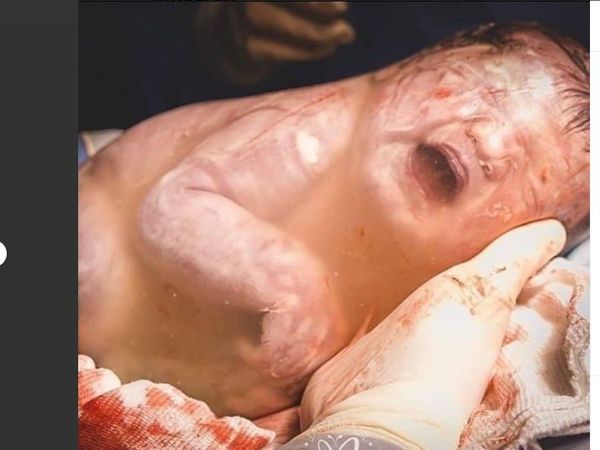Kashmir has witnessed its first case of “en caul” birth, reported at the Budgam District Hospital. This type of childbirth — also known as “mermaid/ veiled” birth has been reported for the first time in the valley.
The cesarean was performed by a team of doctors led by Dr. Sanjeeda Kawoosa at District Hospital, Budgam.
Though this type of childbirth is fairly rare, both the mother and the baby in the Budgam District Hospital in Kashmir are doing well with no postpartum complications as otherwise reported in many such cases.
Director Health Services (DHS), Kashmir, Dr. Mushtaq Ahmad Rather has complimented doctors for the rare surgical feat. He expressed there is a huge talent pool available with the Directorate of Health Services, Kashmir. He said doctors and paramedics rise to the occasion in challenging situations.
Dr Sanjeeda Kawoosa said it was a rare and magical surgery throughout her 14 years in the medical profession. “It was a complicated and challenging surgery which we performed successfully at Budgam hospital. The baby was still in the amniotic sac which means the fluid-filled bag holds and protects a fetus in the womb,” she said.
Dr Sanjeeda said that this was a first case of en caul birth at 39 weeks and this makes it rare. “The weight of the baby was 3.3 kg. It was a challenging case for us. We had to use all the expertise and techniques with proper care. We had to be very cautious as a simple prick would have caused a damage. For me it was a beautiful experience as I have performed this surgery for the first time,” she said.
En Caul birth:
An en caul birth is when a baby, their placenta and umbilical cord are born safely inside their amniotic fluid sac. Another term — a birth caul (not en caul), is when a piece of the amniotic sac is still attached to the baby’s face/head at birth.
What is an amniotic sac?
The amniotic sac is the growing ‘bag of waters’ the baby seems to be swimming in. Inside the amniotic sac and around the baby is a fluid that is 98 per cent water and the remaining 2 per cent are cells made from baby, proteins, hormones, fats and salt. The amniotic sac protects the foetus from injury and regulates temperature to keep them at an optimal temperature for normal growth and development throughout the pregnancy.
The amniotic sac is made up of two layers:
- An amnion — This is the inner layer that contains the foetus and the amniotic fluid or ‘waters’
- A chorion — The outer layer that contains the amnion and is part of the placenta.
If a pregnant woman’s waters “break”, it means these two translucent layers have naturally torn. An en caul birth occurs when these two thin but tough layers remain intact, even during labour and birth. I refer to the notes on the Instagram account of a paediatric nurse from Ireland who has explained several fine nuances, complications, and marvels of childbirth.
If a baby is delivered “en caul”, the midwife or doctor present at the birth will carefully snip the sac with sterile scissors gently releasing the amniotic fluid and peeling away the remaining sac. Sometimes the baby can wriggle and rupture the sac themselves after delivery.
The baby remains connected to the umbilical cord immediately after birth and should do so until it stops pulsing and turns white. That is why when an “en caul” birth happens, there is no need to worry that the baby isn’t receiving oxygen. Once the membranes are ruptured and removed, the baby should still receive immediate skin to skin and that golden hour after delivery, advice doctors.
